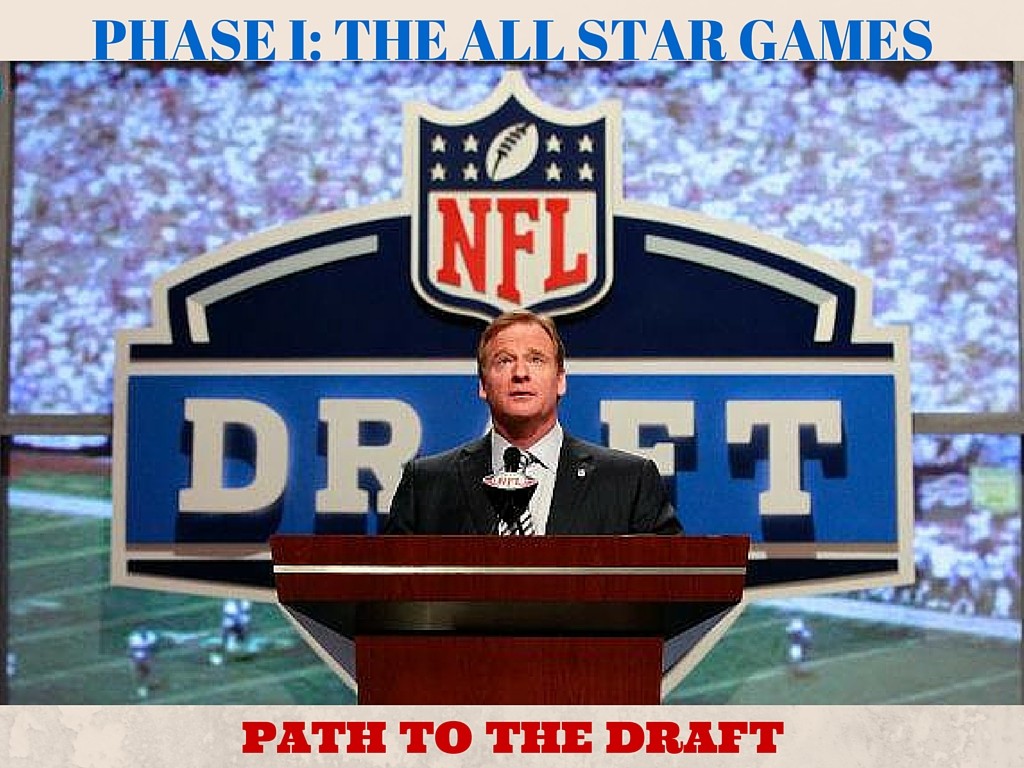Road to the Draft: Phase I The ALL STAR Games

The NFL draft is rapidly approaching and whether you are excited to see who your NFL team is looking to select or you just want to follow your favorite college player to his new team; there are really five distinct phases that lead to the big day. In this four part series I will break down each phase and what is important about it and why it matters for every NFL hopeful.
The 1st phase is agent and All-Star game selection. Not long after their final collegiate game, most players will have signed with an agent. And while they were not able to enter into any type of contract during their collegiate season, most probably had decided who would represent them. Thus it is a mere formality of signing a contract after the game. However, once the contract is signed, the real decisions begin.
The first tough decision is exclusively for Seniors. Hopefully they have played enough to receive an invite to one of the many collegiate All Star games. If they have… great, now there are options and choices. The games range from some of the old tenured (East West Shrine Game) to some with the highest exposure to NFL scouts possible (The Senior Bowl). The East West Shrine Game and the Senior Bowl are the two biggest games to play in, but there are a number of others that provide the opportunity for players to flash their abilities against other fine players around the nation.
The question then becomes; what do I have to gain from playing in this game? It is a tough question to answer and the reasons on both sides will be incredibly different for every player. Players from smaller schools or without terrific stats may want to play to show that they can be productive against other top flight players. Some players may want to demonstrate their skill set is transferable to a pro style offense or defense. Potentially players coming off an injury riddled campaign or a complete position change may want to show their raw abilities can be molded into a NFL position player.
These reasons all demonstrate the upside to playing in the game, however there are other possibilities to consider. If a player’s stock is already as high as it can go there really is no reason for him to play in any game. The only potential outcomes are negative, such as an injury or overall poor performance.
The week of practice at many of these games is generally more important than the game itself. If there are NFL coaches involved, they will generally manipulate the drills to identify a particular players strengths and weaknesses during the week. By isolating individual matchups, scouts and coaches can then determine if a particular player has a unique strength or weakness that may have been masked during a full team performance.
Outside of practice the evaluation can become even more intense. Players are tasked everyday with learning a completely new system and taking it daily to the field. While these systems pale in comparison to an NFL playbook, it allows the players to be judged on their football aptitude and ability to learn quickly. The downtime in the evening is spent with teams in interview rooms. Teams will bring in most players and vet them about any off the field incidents or rumors surrounding their past. These meetings are incredibly intense because they resemble an FBI interrogation more than a football meeting.
Finally at the end of the week there is a game. It is finally time for the players to showcase their skills in live team action. While the game is important, most of the coaches and scouts have left the bowl site and have returned to their team headquarters to begin uploading all of their new information. Players can help their stock in the game, but by that point the sun is setting on their last chance to display their skills while dawning a helmet and shoulder pads.
